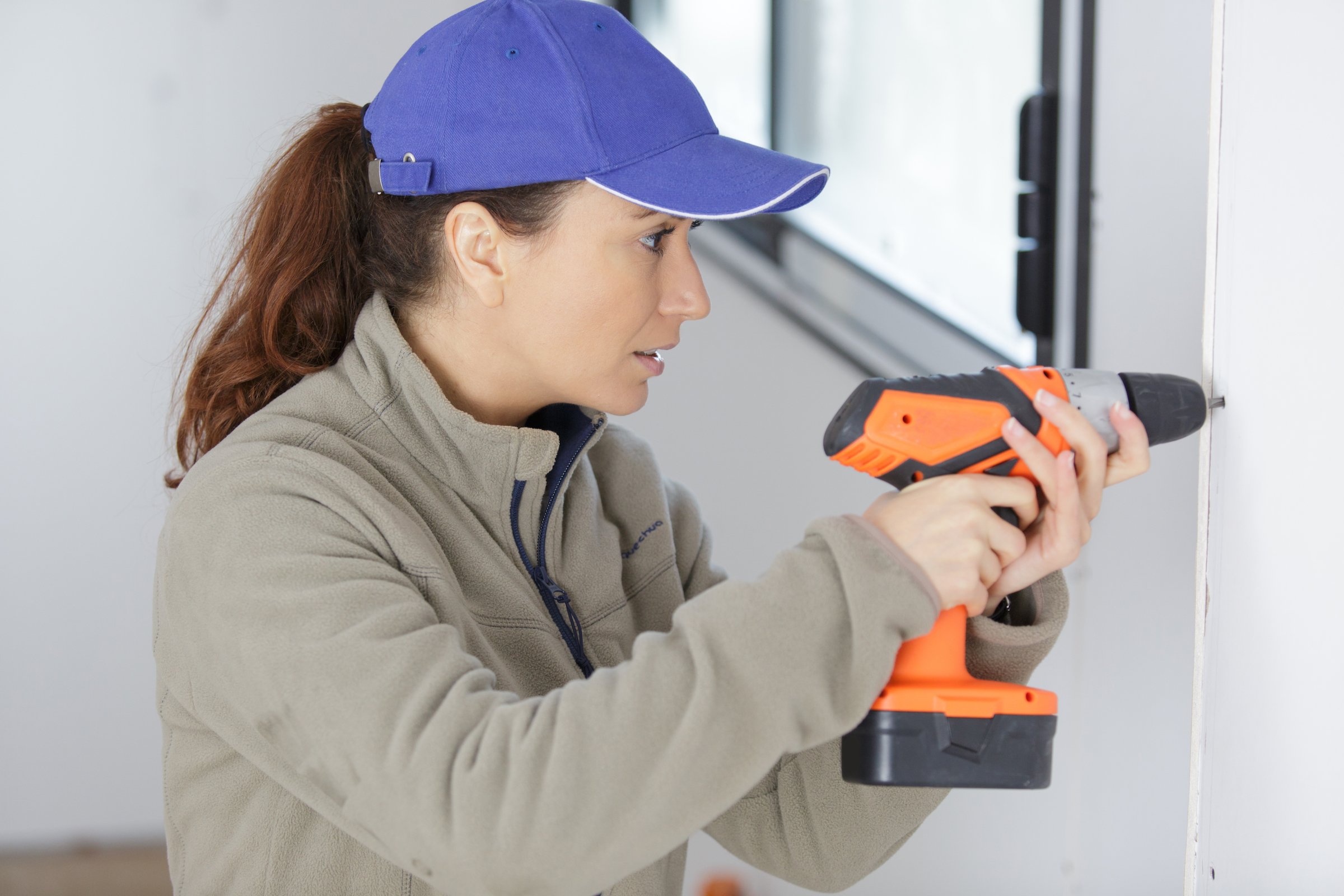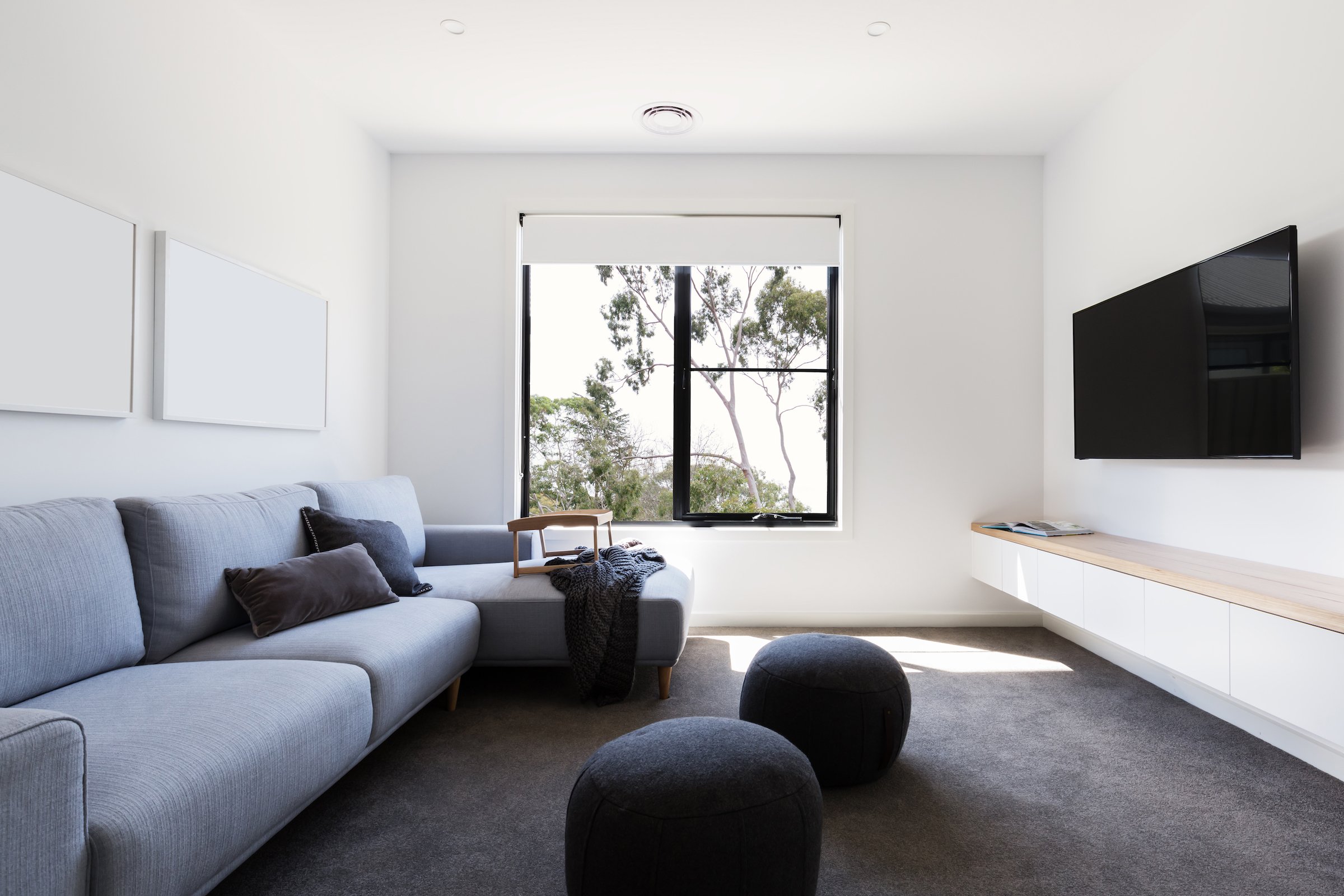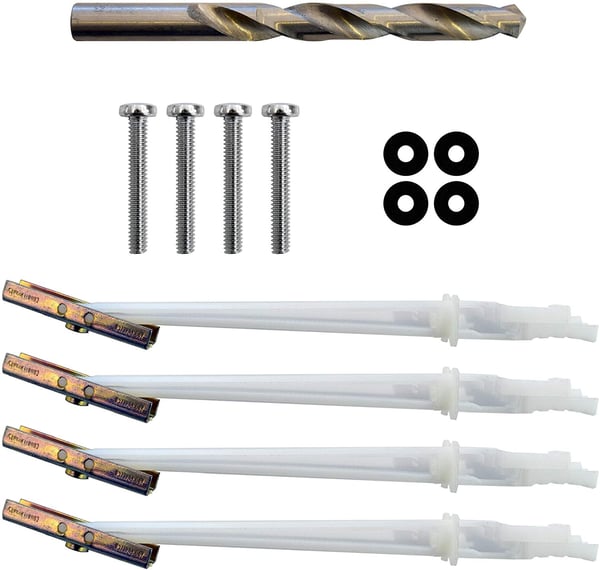If you want to mount your TV to the wall but know you’re working with metal studs, don’t get discouraged. It is possible to mount a television to metal studs yourself, so long as you do it properly.
We've put together a step-by-step guide to help you mount your TV with metal studs and to give you the confidence that your television won't fall off the wall.
Step 1: Purchase the Correct Hardware
Typical lag bolts or screws are perfect fasteners when your wall studs are made from wood. Unfortunately, metal stud construction complicates the process and requires different hardware for proper support.
Metal studs are hollow and narrow, so you'll need hardware that will be strong enough to support the weight of the television and long enough to reach the studs. While there are a few options, the best choice is a snap toggle.
Snap toggles are stronger than a toggle bolt or drill toggle and can be used as an anchor for installing a flat screen TV through metal, drywall, and plaster.
Step 2: Find the Studs
Just like their wooden counterparts, you’ll be able to locate your metal studs behind the drywall with a stud finder. Most metal studs are only about 1.25" wide and drilling in the exact center will be critical.
Run the stud finder along the wall in the approximate area where you plan to mount your television. Mark the left and right edges with a pencil in several spots along the vertical plane. To more accurately find the edges of the studs, since you’ll need to find the precise center later on, use a small drill bit to explore behind the drywall. As these holes will be behind the TV, a few strategically placed pilot holes will not be visible once the job is done.
Step 3: Pre-drill the Pilot Holes to Ensure Proper Placement
 You'll ultimately need to drill a 1/2" hole to fit the snap toggle, but to ensure the hole is precisely in the center of the stud, you should use a smaller drill bit first. Use the television mount template to line up the mount's holes on the wall. Use a level to be sure the TV will be mounted straight. Once you have pre-drilled the pilot holes, you can drill the larger 1/2" holes more accurately.
You'll ultimately need to drill a 1/2" hole to fit the snap toggle, but to ensure the hole is precisely in the center of the stud, you should use a smaller drill bit first. Use the television mount template to line up the mount's holes on the wall. Use a level to be sure the TV will be mounted straight. Once you have pre-drilled the pilot holes, you can drill the larger 1/2" holes more accurately.
Step 4: Insert the Hardware and Attach the Bracket
You’ll need to install the snap toggles vertically so that they line up with the metal studs. This will ensure that the wall bracket sits flat on the wall and doesn't rock. Insert each bolt and rotate it so the wings open vertically behind the flange.
Make sure the bracket is level, then tighten the bolts. They should be secured against the stud and the drywall. We recommend that you insert a snap toggle into every hole in the TV mount. Even if each bolt doesn't line up with a metal stud, it will provide extra support for your TV.
Step 5: Attach Your TV to the Wall
Once you’ve tightened the mounting bracket securely to the wall, you can hang your TV using the manufacturer's recommended method.
Need a Hand? Call Puls to Mount Your TV on Metal Studs
 For those less inclined to mount their own television on the wall, the experts at Puls have the skills and equipment needed to get the job done fast.
For those less inclined to mount their own television on the wall, the experts at Puls have the skills and equipment needed to get the job done fast.
Installation service only starts at a low price of $69, and our online appointment booking is quick and easy. We can be at your door when it's convenient for you, even that same-day if needed.
We're open daily, including nights and weekends, so you can get your TV mounted ASAP.
Don't forget about the Puls 90-day guarantee on all services. You can trust that if something's not right, we'll make sure it's repaired or replaced as soon as possible.






